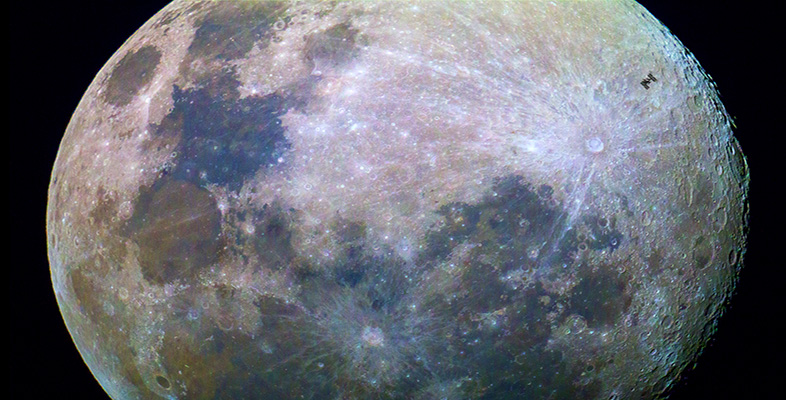2.3 Missions to the Moon
David A. Rothery Teach Yourself Planets, Chapter 6, pp. 66-75, Hodder Education, 2000, 2003.
Copyright © David Rothery
The Moon was the first extraterrestrial target for space missions. Probes have been directed towards it since almost the very dawn of the space age (see below), and it was the main focus of the 1960s-1970s 'space race' between the USA and the then Soviet Union. In the end, only NASA attempted to put people on the Moon, and the six successful Apollo landings brought back a total of 382 kg of lunar rocks. These samples, together with 0.3 kg collected from other sites by unmanned Soviet sample return missions, are what has enabled us to calibrate the cratering timescale and were immensely important in developing our current level of understanding of the Moon's origin and history.
The budget for the Apollo programme was terminated in 1972, after which there was little further effort in lunar exploration until 1994 when the Clementine probe went into lunar orbit and collected a wealth of previously unknown information about the topography, crustal thickness, and variations in crustal composition across the whole lunar globe (Plate 2 [image can be found at: nssdc.gsfc.nasa.gov/planetary/ice/ice_moon.html]). This was followed in 1998 by another orbiter, Lunar Prospector, which provided even more insights and discoveries, such as the existence of ice dispersed within the regolith at both poles. The European Space Agency and Japan each plan lunar missions for the early years of the twenty-first century.
| Name | Description | Date |
|---|---|---|
| Luna 2 | impact with surface | Sept. 1959 |
| Luna 3 | fly-by, images of far side | Oct. 1959 |
| Rangers 7-9 | images at close range prior to impact | Mar. 1965-July 1972 |
| Luna 9 | unmanned landing, pictures from surface | Feb. 1966 |
| Luna 10 | first probe to orbit Moon | Apr. 1966 |
| Surveyor 1, 3, 5-7 | unmanned landings, images from surface | June 1966-Jan. 1968 |
| Lunar Orbiter 1-5 | images from orbit | Aug. 1966-Aug. 1967 |
| Luna 11-12 | images from orbit | Aug.-Oct.1966 |
| Apollo 8 | first manned orbits | Dec. 1968 |
| Apollo 11, 12, 14-17 | manned landings, geological and geophysical studies, sample return | July 1969-Dec. 1972 |
| Luna 16, 20, 24 | unmanned sample returns | Sept. 1970-Aug. 1976 |
| Luna 17, 21 | Lunokhod unmanned surface rovers | Nov. 1970, Jan. 1973 |
| Galileo | fly-by en route to Jupiter, compositional mapping | Dec. 1992 |
| Clementine | high resolution multispectral imaging and laser altimetry from orbit | Jan-Mar. 1994 |
| Lunar Prospector | geophysical and geochemical mapping from orbit | Jan. 1998-July 1999 |
| SMART 1 | European Space Agency lunar orbiter | 2003 |
| Lunar A | Japanese lunar orbiter and seismometers | 2003 [cancelled] |
| Selene 1 | Japanese lunar orbiter and lander | 2004 [actual launch, 2007] |
